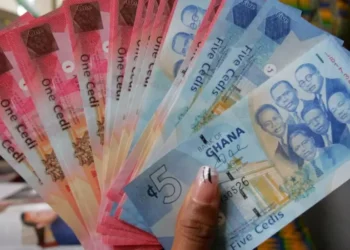Revenue from the sale of liquefied petroleum gas (LPG) declined by 4.16 percent in 2020, according to PIAC findings. This reflects a fall in the amount invoiced for total LPG sold from US$25,881,559.62 in 2019 to US$24,804,618.26 in 2020.
While revenue from the sale of LPG dropped, the total volume of LPG sold shot up. Specifically, the total volume of LPG sold from January to December, 2020 increased by 22.77 percent. From January to December 2020, the total volume of LPG sold was 81,152.48MT. For the same period in 2019, total volume sold was 66,103.29MT.
Moreover, at the end of 2020, the total volume of raw gas received by the Ghana National Gas Company (GNGC) from the Ghana National Petroleum Corporation (GNPC) was 31,333,844.65MMBtu. These receivables were specifically from the Jubilee and TEN Fields invoiced at US$171,959,526.20.
At year-end 2020, a total of US$63,168,178.41 out of US$248,155,869.56 was received from the sale of LPG, Lean Gas and Stabilised Condensates produced by the Ghana National Gas Company (GNGC). This brought the cumulative outstanding receivables due GNGC to US$843,276,652.53 as at December, 2020 as compared to US$942,260,510.63 at the end of 2019.
Despite the drop in sales in LPG, total gas produced during the period increased by 40 percent, PIAC finds. Also, the report indicates that the volumes and cost of raw gas received from GNPC was quite erratic throughout 2020.
Available data shows an increase in the trend of exports resulting in a year-to-date total of an amount payable of US$507,024,595.1 of raw gas in 2020 as against US$334,636,806.22 during the same period in 2019. Thus, reflecting a percentage increase of 51.6 percent.
LNG import by government to supplement Ghana’s gas
Against this backdrop, GNPC is serving as the off-taker for an LNG import, costing the government not less than US$300 million. According to S&P Global Platts, the first cargo is set to arrive in the country by the end of May.
Africa Centre for Energy Policy (ACEP) has however indicated that the expenditure on LNG imports is wasteful and would only compound energy sector woes.
With an increase in gas production by 40 percent in 2020 alone, coupled with a decline in sales, an additional LNG supply will overly increase the required LNG for use by the country as well as sales.
ACEP notes that to facilitate the LNG supply, the government has repressed the capacities of domestic sources of gas supply. And not only that, gas supply from Nigeria has also been reduced to make way for the import of LNG.
Some of the LNG volumes, if not consumed within the next two to three years will become a huge liability the government would have to pay. According to ACEP, take-or-pay volumes of gas from the Offshore Cape Three Points (OCTP), for instance, is suppressed to 171 million standard cubic feet (mmscf).
ACEP also finds that there are some financial risks involved in the additional supply of LNG. The LNG is more costly than the Nigeria gas. Accordingly, LNG is $3 per mmb tube more than the Nigeria gas.
With the Energy Sector already covered in a pile of debt as well as other gargantuan problems, this should concern the government on further actions to take regarding this move.
READ ALSO: DBG requires no branch network – Ofori-Atta



















